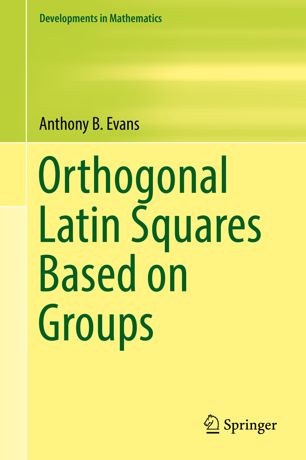

Most ebook files are in PDF format, so you can easily read them using various software such as Foxit Reader or directly on the Google Chrome browser.
Some ebook files are released by publishers in other formats such as .awz, .mobi, .epub, .fb2, etc. You may need to install specific software to read these formats on mobile/PC, such as Calibre.
Please read the tutorial at this link: https://ebookbell.com/faq
We offer FREE conversion to the popular formats you request; however, this may take some time. Therefore, right after payment, please email us, and we will try to provide the service as quickly as possible.
For some exceptional file formats or broken links (if any), please refrain from opening any disputes. Instead, email us first, and we will try to assist within a maximum of 6 hours.
EbookBell Team

4.3
88 reviewsThis monograph presents a unified exposition of latin squares and mutually orthogonal sets of latin squares based on groups. Its focus is on orthomorphisms and complete mappings of finite groups, while also offering a complete proof of the Hall–Paige conjecture. The use of latin squares in constructions of nets, affine planes, projective planes, and transversal designs also motivates this inquiry.
The text begins by introducing fundamental concepts, like the tests for determining whether a latin square is based on a group, as well as orthomorphisms and complete mappings. From there, it describes the existence problem for complete mappings of groups, building up to the proof of the Hall–Paige conjecture. The third part presents a comprehensive study of orthomorphism graphs of groups, while the last part provides a discussion of Cartesian projective planes, related combinatorial structures, and a list of open problems.
Expanding the author’s 1992 monograph, Orthomorphism Graphs of Groups, this book is an essential reference tool for mathematics researchers or graduate students tackling latin square problems in combinatorics. Its presentation draws on a basic understanding of finite group theory, finite field theory, linear algebra, and elementary number theory—more advanced theories are introduced in the text as needed.